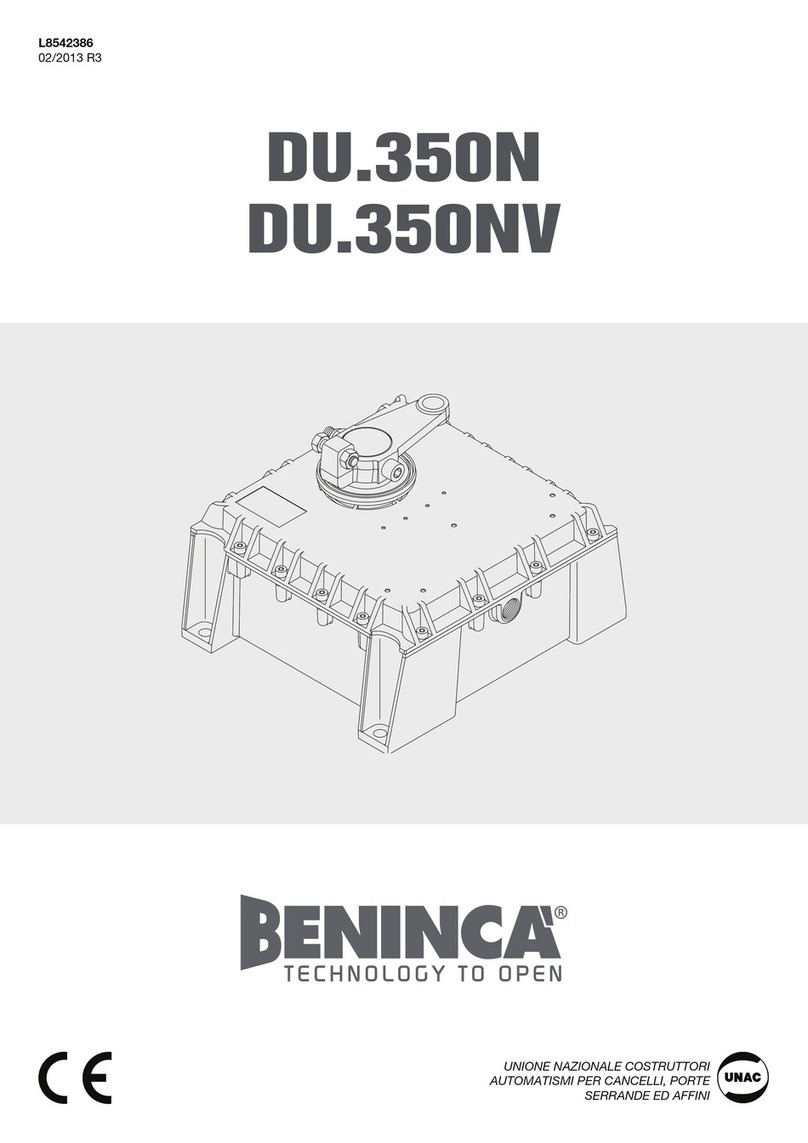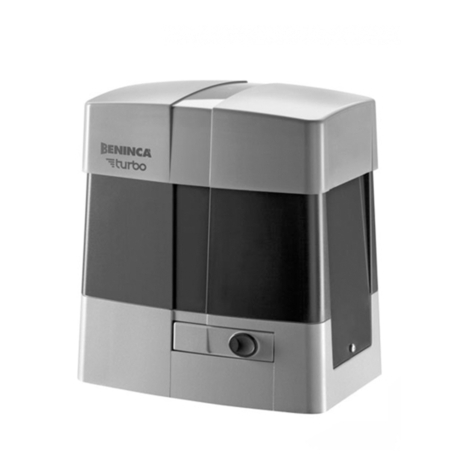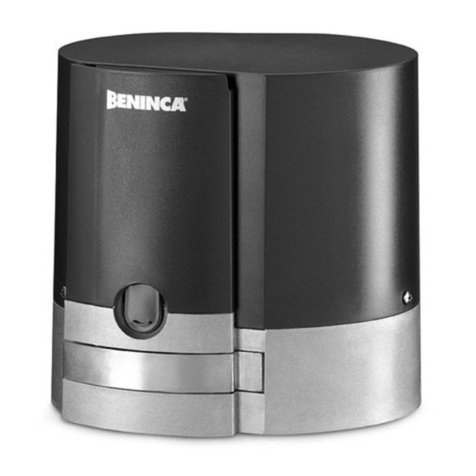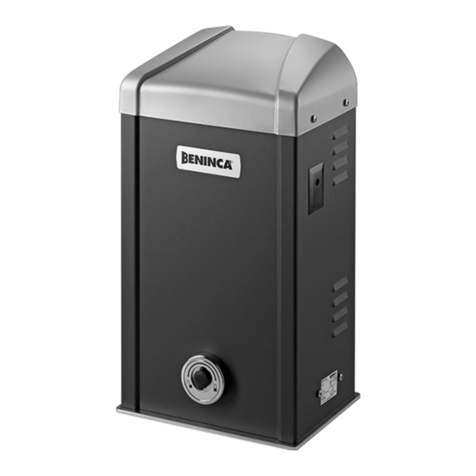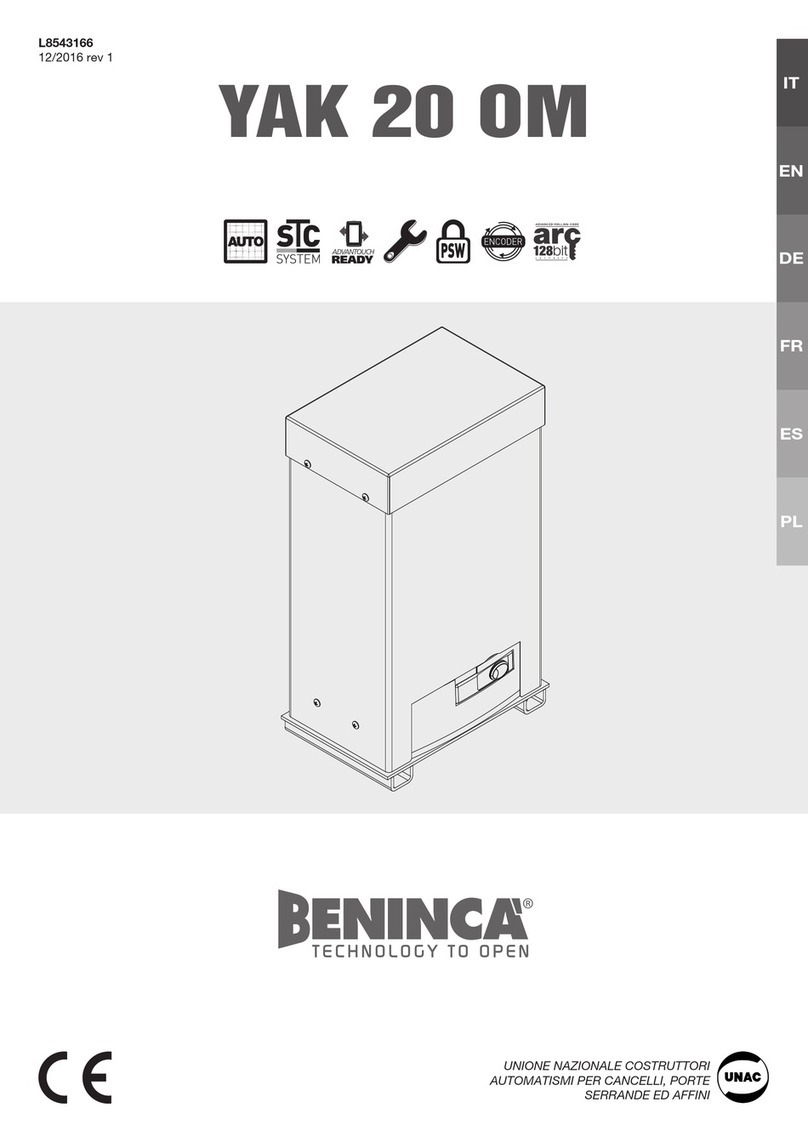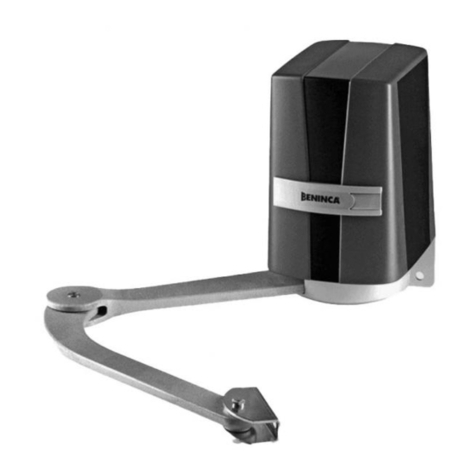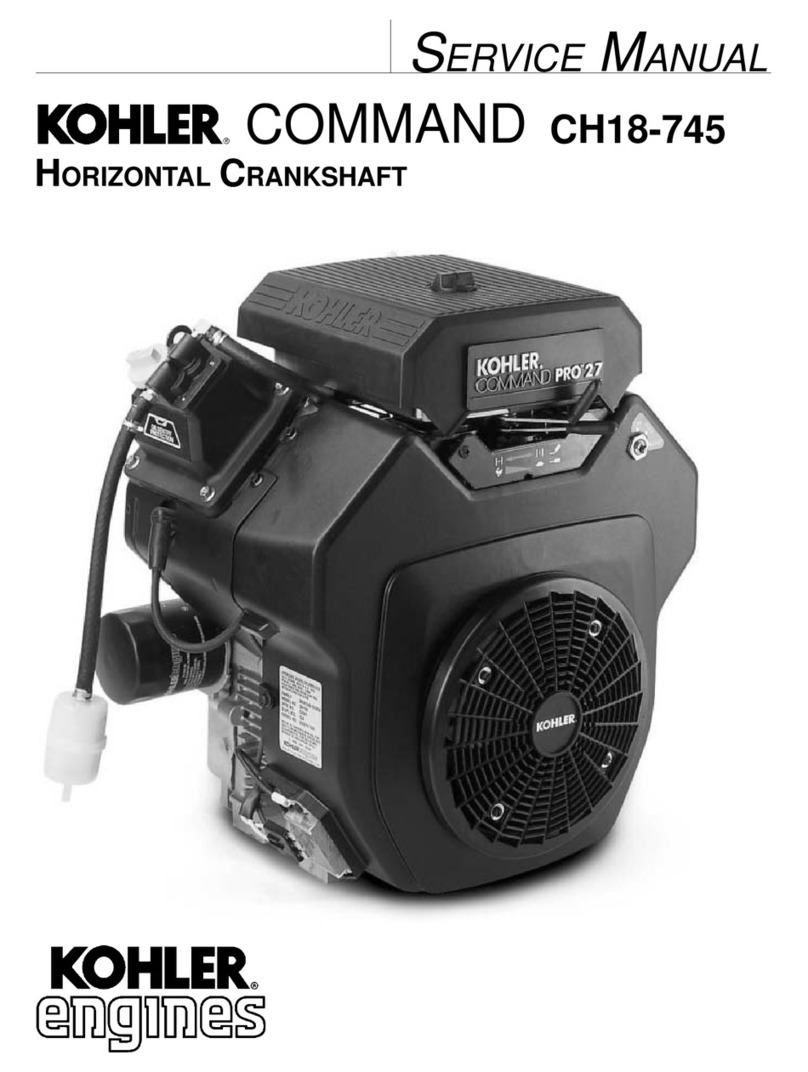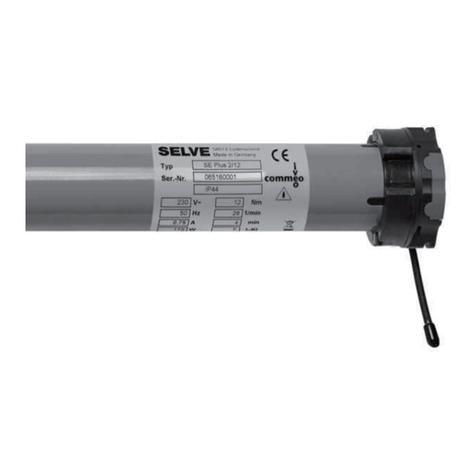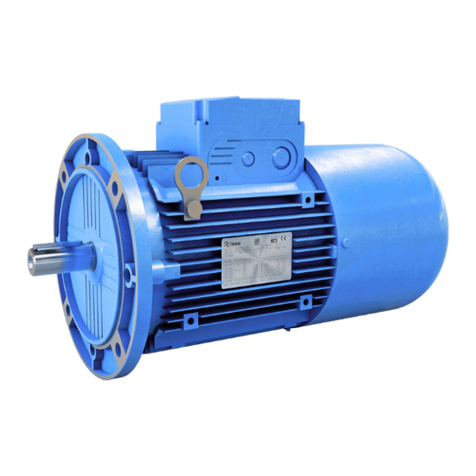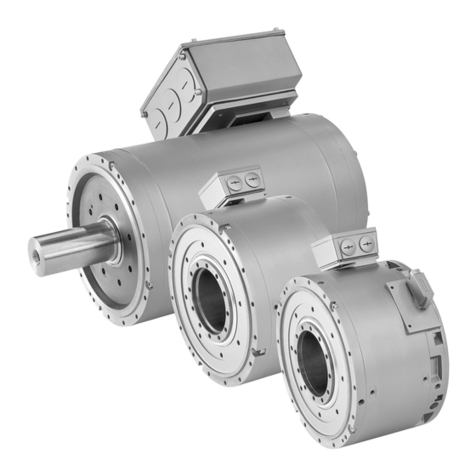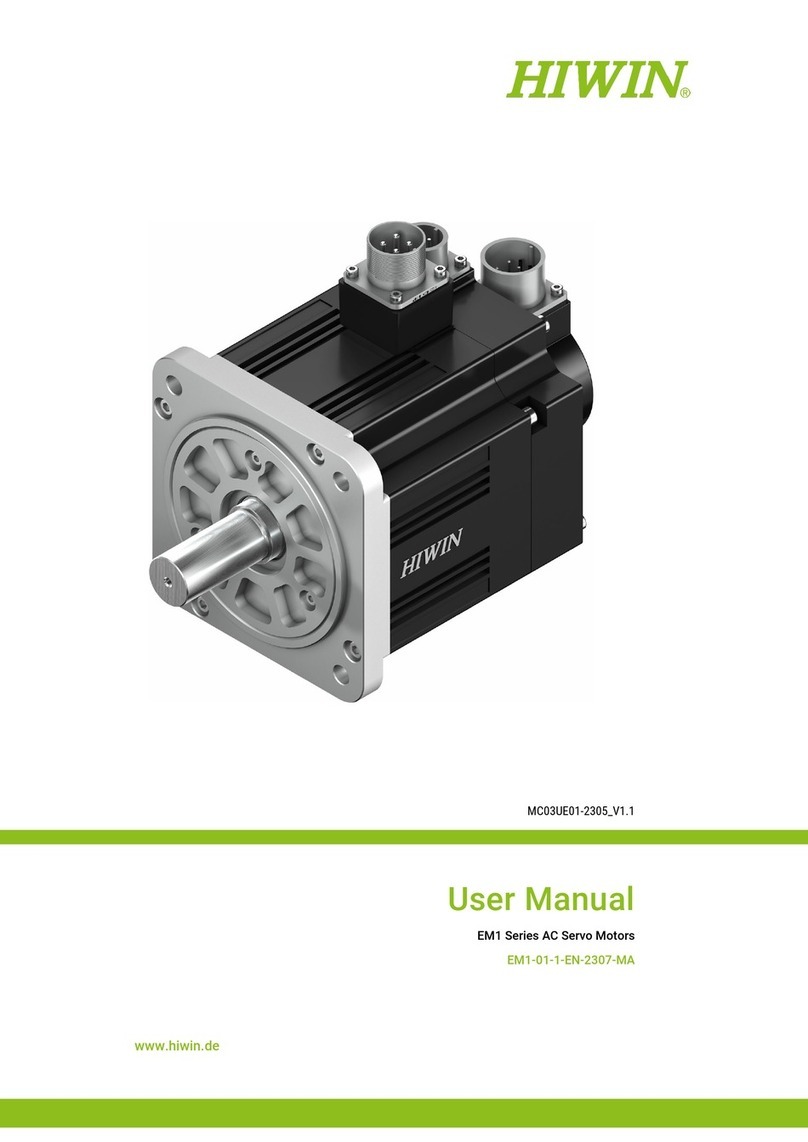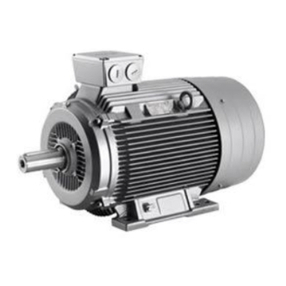
8
Introduzione
Ci congratuliamo con voi per aver scelto il motoriduttore
DU.350.
Tutti gli articoli della vasta gamma Benincà sono il frutto di
una ventennale esperienza nel settore degli automatismi
e di una continua ricerca di nuovi materiali e di tecnologie
all’avanguardia.
Proprio per questo, oggi siamo in grado di offrire dei prodotti
estremamente affidabili che, grazie alla loro potenza,
efficacia e durata, soddisfano pienamente le esigenze
dell’utente finale.
Notizie generali
Per un buon funzionamento delle automazioni in oggetto,
il cancello da automatizzare dovrà rispondere alle seguenti
caratteristiche:
- buona robustezza e rigidità
- ogni anta deve avere una sola cerniera (eventualmente
eliminare le superflue all’atto dell’automazione)
- le cerniere devono presentare giochi minimi e permettere
che le manovre manuali siano dolci e regolari
- in posizione di chiusura le ante devono combaciare fra
loro per tutta l’altezza.
1. Caratteristiche generali
Sistema a scomparsa totale che non altera l’estetica del
cancello.
Semplice ed affidabile può essere installato su qualsiasi
cancello a battente fino a max. 4 m per anta (max 3m per
versione DU350NV).
Il movimento è silenzioso e regolare grazie ad un sistema
di leve che adegua la velocità alle varie fasi della manovra.
Il motoriduttore, interamente a bagno d’olio, non permette
l’infiltrazione d’acqua o la formazione di condensa che
potrebbero compromettere irrimediabilmente la funzionalità
del motore.
Non necessita di elettroserrature in quanto il sistema
irreversibile assicura il blocco delle ante.
L’installazione è di facile esecuzione; infatti, una volta
interrata la cassa, il motoriduttore viene fissato con viti e
dadi in acciaio inox.
Lo sblocco per la manovra manuale avviene mediante
leva speciale fornita in dotazione (art. SB.DU350L), oppure
tramite chiave personalizzata (art. SB.DU350K).
Le casse di fondazione sono sottoposte al trattamento di
cataforesi e il coperchio è inoltre verniciato, per coadiuvare la
massima durata nel tempo ad un ottimale risultato estetico.
Con l’applicazione del dispositivo DU.180N si ottiene
un’apertura a 180° (per ante con lunghezza non superiore a 2
m). Lo stesso DU.180N può essere adottato come soluzione
per l’automazione di passaggi speciali.
2. Arresti meccanici (fig. 1)
Il cancello da automatizzare deve disporre di arresto
meccanico sia in apertura che in chiusura, in quanto il
DU.350V/DU350NV non dispone di finecorsa elettromagnetici.
E' comunque disponibile come accessorio opzionale il kit
finecorsa DU.350FC di rapida installazione e regolazione.
3. Posa della cassa di fondazione
Fare riferimento alle istruzioni fornite in dotazione con la
cassa di fondazione DU.350CF.
4. Fissaggio del motoriduttore
4.1
Fissare il motoriduttore con n° 4 dadi esagonali M10 inox
(in dotazione) sulle viti sporgenti dalla cassa interrata.
N.B.: Nella cassa sono presenti 8 viti; utilizzare quelle
rispondenti alle esigenze seguendo le istruzioni di fig. 4.
4.2 Collegare il gruppo di traino con la staffa del motore
tramite la leva di collegamento (Fig.7).
4.3 Con l'anta in appoggio sul fermo di arresto di chiusura,
regolare la vite V di Fig.7 ad una distanza di 1/2mm
dalla leva di collegamento (solo nel caso di montaggio
standard).
4.4 È disponibile come accessorio il fermo meccanico
per apertura regolabile(DU.350ST) da posizionare
nell'apposita sede sulla staffa di traino, come indicato
in Fig.7
4.5 Prima di serrare i dadi M10, controllare che il motoriduttore
sia ben appoggiato al fondo della cassa, altrimenti
spessorare dove richiesto, tenendo presente che il
motoriduttore deve essere in piano (verificare ciò tramite
livella).
5. Apertura a 110° (fig. 8)
Per un'apertura a 110°, calcolare che la quota X tra perno
e spigolo del portante sia tale da permettere la rotazione
tenendo conto dello spessore del portone Y.
6. Apertura a 180°
Si può realizzare anche l’apertura a 180° tramite l’apposito
dispositivo art. DU.180N. Tale soluzione è consigliata
per lunghezze anta fino a 2 m; si può utilizzare anche per
lunghezze maggiori, ma il funzionamento diventa meno
dolce e regolare.
ATTENZIONE
Tutti i prodotti Benincà sono coperti da polizza assicurativa
che risponde di eventuali danni a cose o persone causati
da difetti di fabbricazione, richiede però la marcatura CE
della ”macchina” e l’utilizzo di componenti originali Benincà.
DATI TECNICI DU.350N
DU.NGE
DU.350NV
DU.350 NVE
Alimentazione 230 Vac 230 Vac
Potenza assorbita 310 W 310 W
Corrente assorbita 1,4 A 1,4 A
Coppia 450 Nm 270 Nm
Classe isolamento mot. F F
Rumorosità < 70 dB < 70 dB
Tempo man. anta (90°) 18 s (1). 11 s (1).
Peso max. anta 500 kg 500 kg
Lunghezza max. anta 3,5 m (2) 3 m (2)
Intermittenza lavoro Uso intensivo Uso intensivo
Lubrificazione AGIP Blasia 32 AGIP Blasia 32
Condensatore 12,5 µF 12,5 µF
Grado IP IP67 IP67
Peso DU.350N/350NV 18,5 kg 20,3 kg
(1) Con rallentamento disabilitato.
(2) È possibile automatizzare anche ante di lunghezza maggiore ma il
funzionamento diventa meno dolce e regolare.
